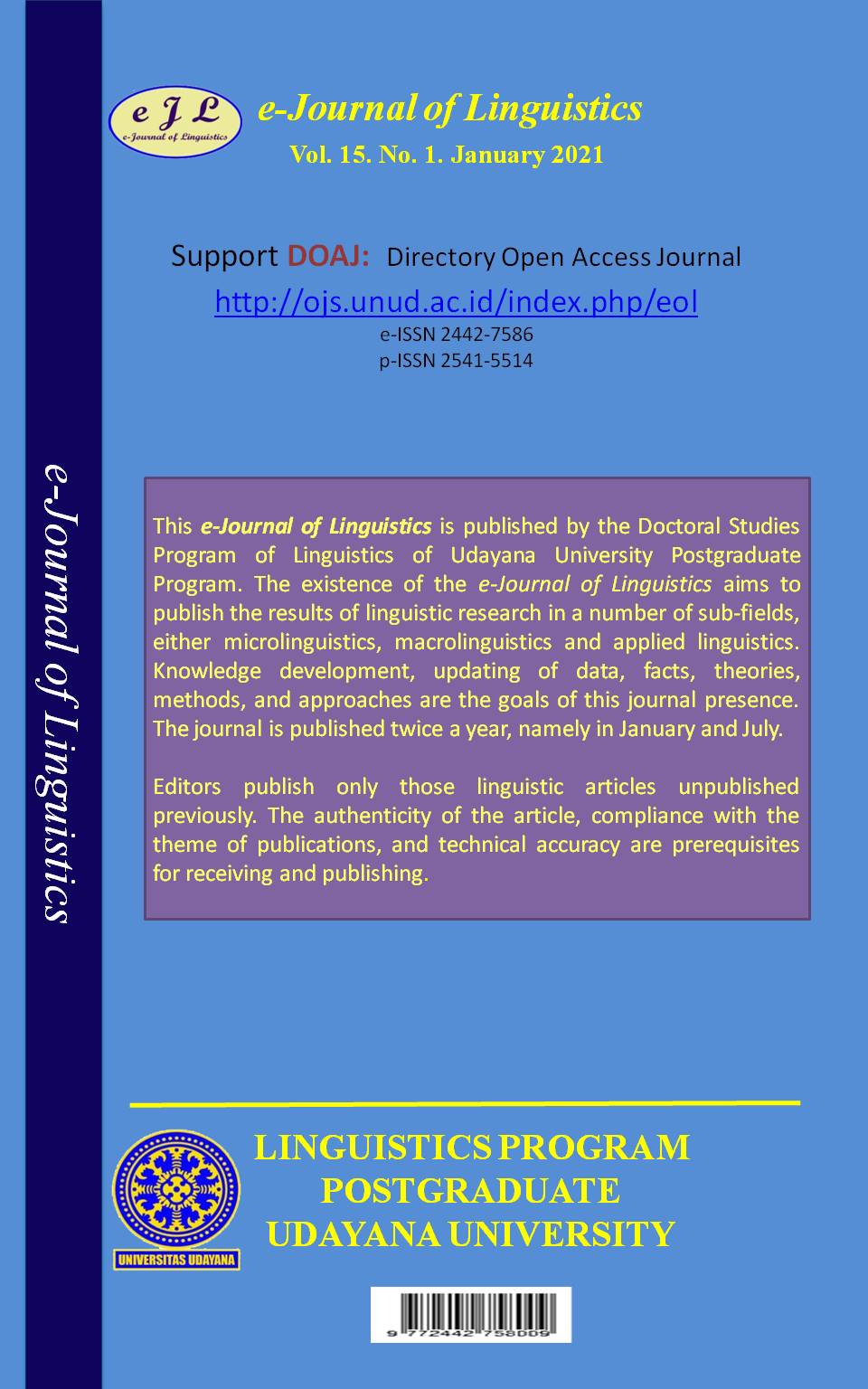Modality in Satua Crucuk Kuning: Systemic Functional Linguistics Perspective
Abstract
Text of I Crucuk Kuning is a Balinese narrative text which contains very important moral value for our lives. The text involves two main figures, namely; I Bawang and I Kasuna. I Bawang serves antagonist while I Kasuna serves protagonist. The text presents dialog as social interaction medium in which employ modalities expressed within speech functions. This paper analyzes the application of modality express by the participants. The theory used to analyze the text is the theory of modality as part of interpersonal meaning from systemic functional linguistics proposed by Halliday. The data were obtained from Satua Bali I Crucuk Kuning written by Tinggen (2011). The data were analyzed from both syntactic and semantic aspects and then described descriptively. The result of the research suggests that I Kasuna is has good character and never complain to do any given job. Meanwhile, I Bawang has bad character by slandering and underestimating I Kasuna. The text persuade us to do good behavior by filling promise which is made to others.
Downloads
References
Halliday, M.A.K 2014. Halliday’s Introduction to Functional Grammar. London: Rothledge.
Katamba, Francis. 1993. Modern Linguistics Morphology. New York: St Martin’s Press.
Portner, Paul. 2009. Modality. New York: Oxford University Press.
Suardana, I Ketut. 2020. Expansion Clause in Pan Balang Tamak.
e-Journal of Linguistics, [S.l.], v. 14, n. 1, p. 151-163, feb. 2020. ISSN 2442-7586. Available at: https://ojs.unud.ac.id/index.php/eol/article/view/57210>. Date accessed: 14 Nov. 2020. doi: https://doi.org/10.24843/e-jl.2020.v14.i01.p15.
Tinggen, I Nengah. 2011. Satua-satua Bali. Denpasar: Departement Pendidikan Nasional.

This work is licensed under a Creative Commons Attribution 4.0 International License











